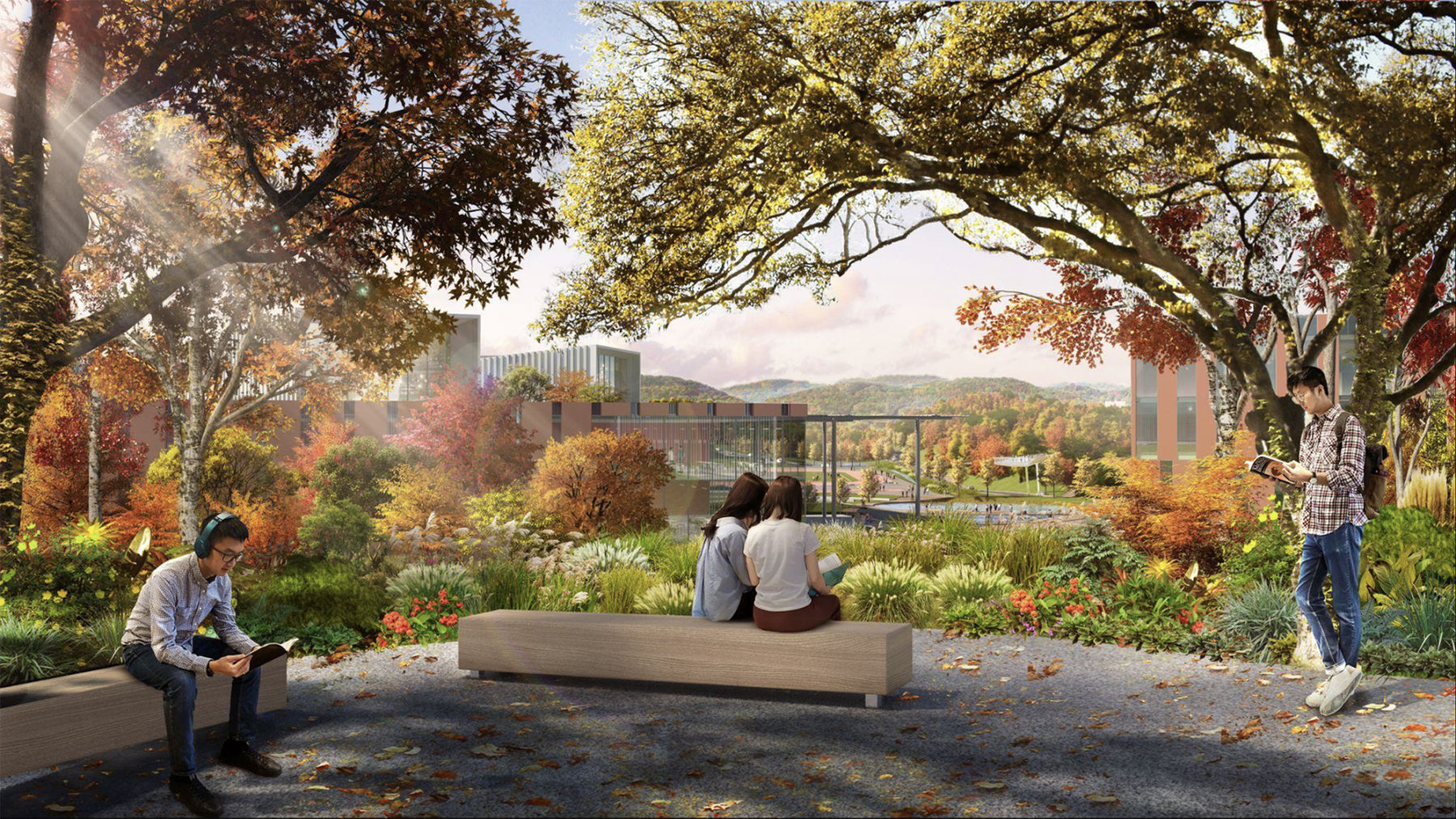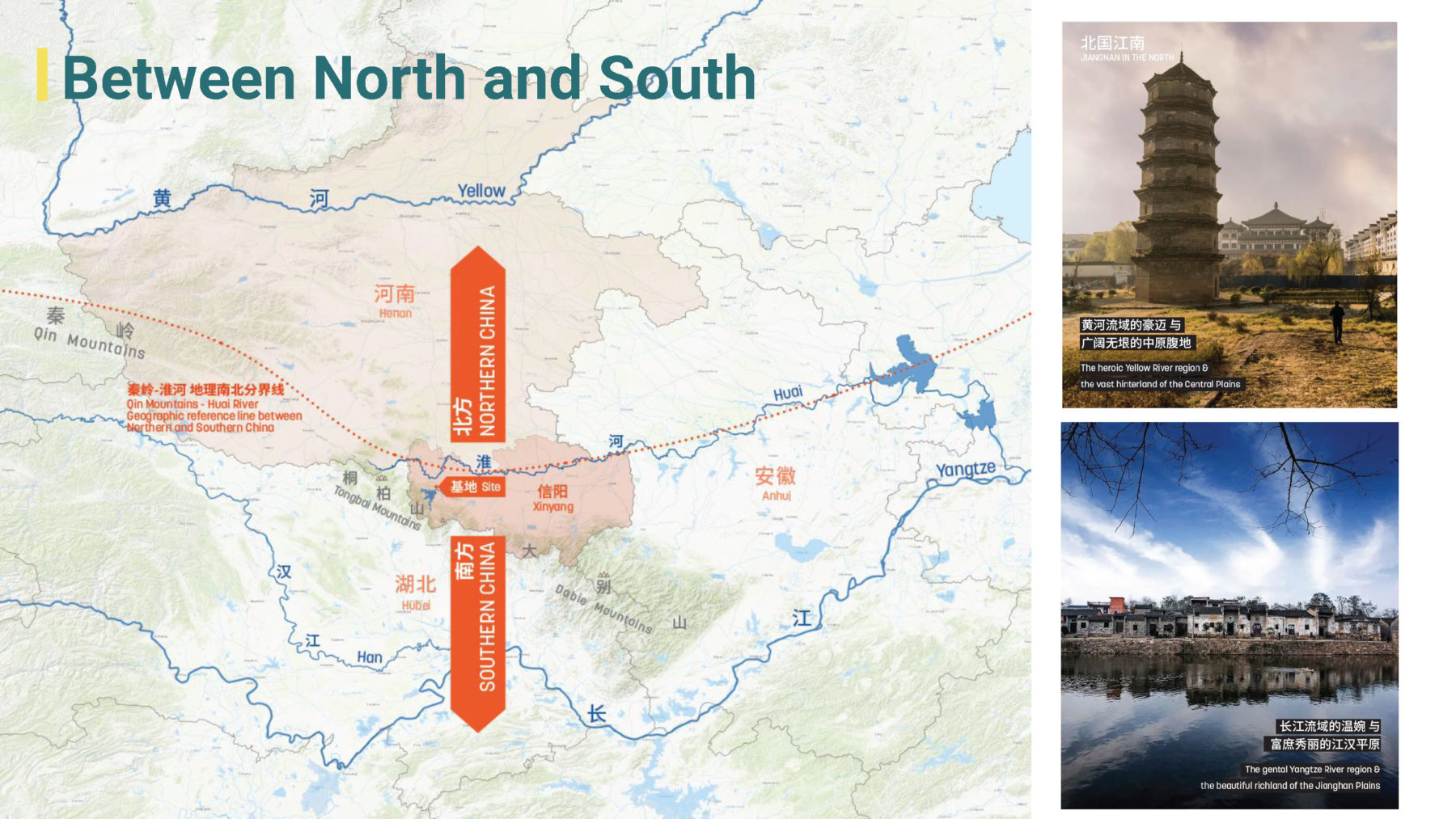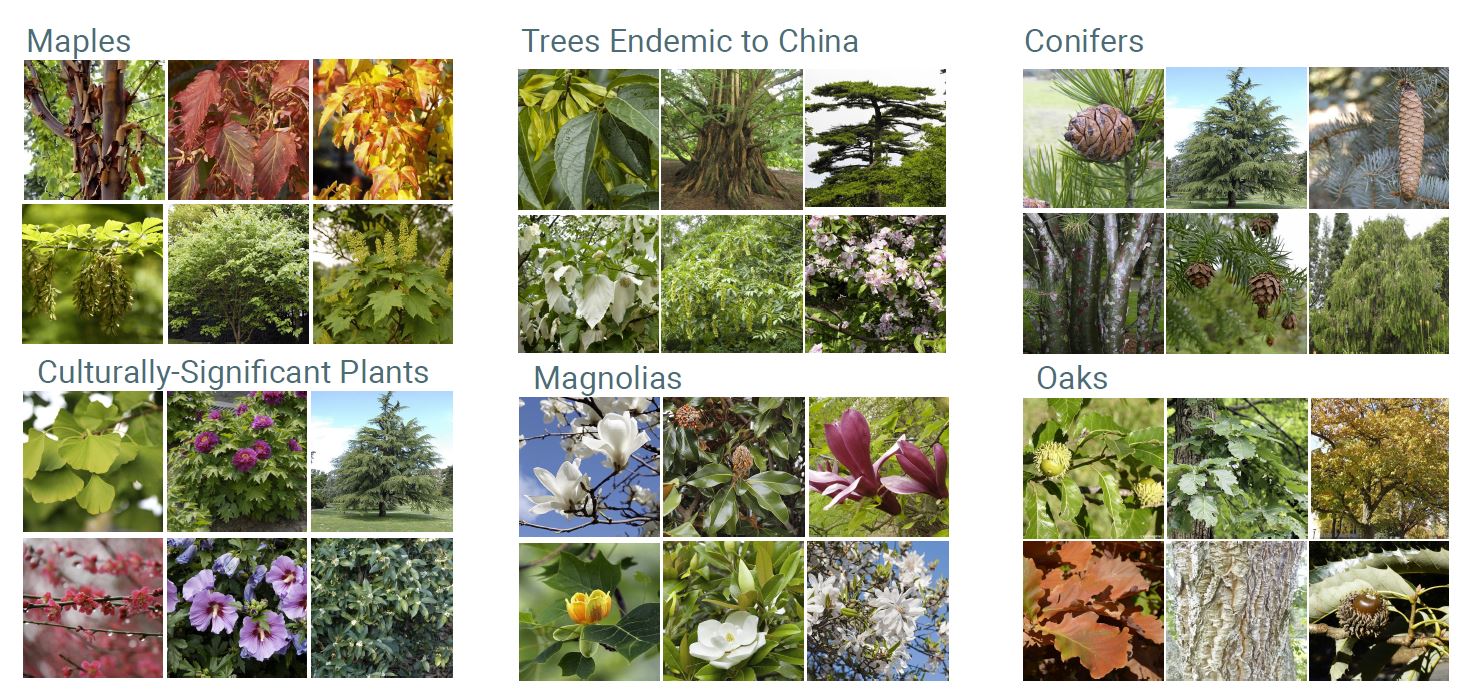
Xinyang University South Bay Campus Master Plan
Xinyang City, Henan Province, China
 Sasaki
Sasaki

Louis Kahn, one of the most important architects in the 20th century, once described the origin of the school landscape: “Schools began with a man under a tree who did not know he was a teacher, sharing his realization with a few others who did not know they were students.”
Arboretums on university campuses in China have a similar origin: Confucius taught his students under an apricot tree during the Chunqiu period (BC 522), and in the early 1900s, when the modern university system was established in China, scholars advocated that each university should have its own arboretum. The arboretum became a common practice in early university campuses, such as Zhejiang University. However, the trend of campus arboreta has been fading away in recent decades due to complex reasons, including investments that tend to emphasize campus buildings rather than the landscape.1

Xinyang University (XYU) is reversing this pattern as protecting biodiversity becomes a national goal. Along with planning five liberal art schools in a new scenic living-learning campus, XYU is pioneering a publicly-open arboretum on a private Chinese campus. By opening the arboretum to the public and challenging regional horticultural norms, XYU will foster a rich cultural space and learning environment for students, faculty, and the community.

While university campuses in China are typically fenced-off, XYU has agreed to make its campus arboretum open to the public through creative circulation strategies. The new arboretum will be a place-based cultural space for students, faculty, and the public that provides a unique collection of local plants and various activity spaces throughout the seasons.
The arboretum will be located on a 6-acre hilly landscape based on the existing topography near the main gateway of the campus. Inspired by the local mountain landscape in Xinyang, the arboretum collects and reuses gravel from the construction site as stone walls to create both active and quiet spaces along different levels of the hill, from the hilltop council ring to immersive forest paths. The area surrounding the arboretum will also be open to the public as an active corner for popular sport games and plazas.


In the region, it is common practice to plant a single species of street tree or limit the plant palette to a small selection of non-indigenous plants. Understory plants tend to be especially underrepresented, with extensive lawns that do little to support native pollinators and plant species. Sasaki has worked with XYU to challenge many of these horticultural norms, creating a living showcase of regional plants that is inspired by the landscape.

Xinyang is uniquely situated at the meeting point of northern and southern China. As well as being a meeting point of cultures, this is where the broadleaf evergreen forests of the south meet the deciduous forests of the north, and the design team drew from this uniquely extensive palette to inform species selection for XYU’s place-based arboretum. The design team worked through numerous planting list iterations with the local consultants to ensure plant availability and suitability. The campus landscape and arboretum will include 72 species of tree, 27 species of shrub, 3 bamboo species, and approximately 80 species of groundcover, most of them native to the region or with a longstanding cultural and horticultural importance in China. These species will soon be planted within the arboretum, featuring clusters of southern broad-leaf evergreens, northern conifers, native oaks and maples, and abundant fruit trees. As well as supporting local biodiversity, the plantings will also offer learning opportunities by pairing with adjacent academic programs, including an herb medicine garden paired with the nursing school, and plants with special cultural significance paired with the arts and contemporary education schools.

After the 2020 UN Biodiversity Conference (COP15), China set the protection of biodiversity as a national strategy, which requires establishing a national botanic garden system for ex situ conservation. Responding to the national strategy, XYU’s new campus arboretum will establish the university as a pioneer in creating a regionally-inspired landscape, a rich learning environment, and a public cultural amenity. By promoting native biodiversity within a public arboretum on the campus of a private university, XYU is opening the door to new horticultural norms in the region. The campus is currently under construction and phase 1 is expected to be completed in 2023.